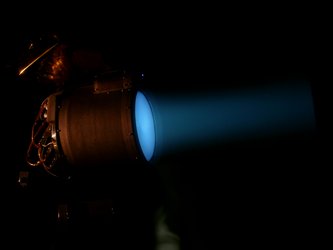Accept all cookies Accept only essential cookies See our Cookie Notice

About ESA
The European Space Agency (ESA) is Europe’s gateway to space. Its mission is to shape the development of Europe’s space capability and ensure that investment in space continues to deliver benefits to the citizens of Europe and the world.
Highlights
ESA - United space in Europe
This is ESA ESA facts Member States & Cooperating States Funding Director General Top management For Member State Delegations European vision European Space Policy ESA & EU Space Councils Responsibility & Sustainability Annual Report Calendar of meetings Corporate newsEstablishments & sites
ESA Headquarters ESA ESTEC ESA ESOC ESA ESRIN ESA EAC ESA ESAC Europe's Spaceport ESA ESEC ESA ECSAT Brussels Office Washington OfficeWorking with ESA
Business with ESA ESA Commercialisation Gateway Law at ESA Careers Cyber resilience at ESA IT at ESA Newsroom Partnerships Merchandising Licence Education Open Space Innovation Platform Integrity and Reporting Administrative Tribunal Health and SafetyMore about ESA
History ESA Historical Archives Exhibitions Publications Art & Culture ESA Merchandise Kids Diversity ESA Brand CentreLatest
Space in Member States
Find out more about space activities in our 23 Member States, and understand how ESA works together with their national agencies, institutions and organisations.
Science & Exploration
Exploring our Solar System and unlocking the secrets of the Universe
Go to topicAstronauts
Missions
Juice Euclid Webb Solar Orbiter BepiColombo Gaia ExoMars Cheops Exoplanet missions More missionsActivities
International Space Station Orion service module Gateway Concordia Caves & Pangaea BenefitsLatest
Space Safety
Protecting life and infrastructure on Earth and in orbit
Go to topicAsteroids
Asteroids and Planetary Defence Asteroid danger explained Flyeye telescope: asteroid detection Hera mission: asteroid deflection Near-Earth Object Coordination CentreSpace junk
About space debris Space debris by the numbers Space Environment Report In space refuelling, refurbishing and removingSafety from space
Clean Space ecodesign Zero Debris Technologies Space for Earth Supporting Sustainable DevelopmentLatest
Applications
Using space to benefit citizens and meet future challenges on Earth
Go to topicObserving the Earth
Observing the Earth Future EO Copernicus Meteorology Space for our climate Satellite missionsCommercialisation
ESA Commercialisation Gateway Open Space Innovation Platform Business Incubation ESA Space SolutionsLatest
Enabling & Support
Making space accessible and developing the technologies for the future
Go to topicBuilding missions
Space Engineering and Technology Test centre Laboratories Concurrent Design Facility Preparing for the future Shaping the Future Discovery and Preparation Advanced Concepts TeamSpace transportation
Space Transportation Ariane Vega Space Rider Future space transportation Boost! Europe's Spaceport Launches from Europe's Spaceport from 2012Latest

Mercury Transfer Module with integrated ion thrusters
Thank you for liking
You have already liked this page, you can only like it once!
The base of ESA’s Mercury Transfer Module with its four T6 ion thrusters fully fitted for its 6.5 year journey to Mercury, along with the rest of the BepiColombo spacecraft.
The module will carry Europe’s Mercury Planetary Orbiter and Japan’s Mercury Magnetospheric Orbiter together to the Sun’s innermost planet.
“Completing the integration of the solar electric propulsion thruster floor is a major achievement for the BepiColombo project,” says project manager Ulrich Reininghaus.
The four ion thrusters are positioned at the bottom of the spacecraft, known as the ‘engine bay’, which provides the thrust during the mission’s journey, including long firing periods lasting several months at a time.
By ionising their propellant plume using electrical energy from the solar panels, the T6 thrusters can accelerate BepiColombo with an efficiency 15 times greater than a conventional chemical thruster.
The work took place at ESA’s centre in the Netherlands, the largest spacecraft testing facility in Europe.
The 22 cm-diameter T6 was designed for ESA by QinetiQ in the UK, whose expertise in electric propulsion stretches back to the 1960s.
It is a scaled-up version of the 10 cm T5 gridded ion thruster, which played a crucial role in ESA’s GOCE gravity-mapper by continuously compensating for vestigial atmospheric drag along its extremely low orbit.
Currently the Test Centre team is preparing the Large Space Simulator for a Sun simulation test planned for the end of this year.
“This will be a very challenging test,” says Georg Deutsch, ETS test programme manager. “Not only will the facility simulate a sun beam at 11000W/m2 but the facility’s vacuum pumps will have to cope with the release of Xenon gas caused by verifying the electrical propulsion system in vacuum”.
-
CREDIT
ESA–U. Reininghaus -
LICENCE
ESA Standard Licence

T6 ion thrusters installed on BepiColombo

BepiColombo ion thruster

Mercury Transfer Module electric propulsion thruster…

T6 ion thruster firing















 Germany
Germany
 Austria
Austria
 Belgium
Belgium
 Denmark
Denmark
 Spain
Spain
 Estonia
Estonia
 Finland
Finland
 France
France
 Greece
Greece
 Hungary
Hungary
 Ireland
Ireland
 Italy
Italy
 Luxembourg
Luxembourg
 Norway
Norway
 The Netherlands
The Netherlands
 Poland
Poland
 Portugal
Portugal
 Czechia
Czechia
 Romania
Romania
 United Kingdom
United Kingdom
 Slovenia
Slovenia
 Sweden
Sweden
 Switzerland
Switzerland

























